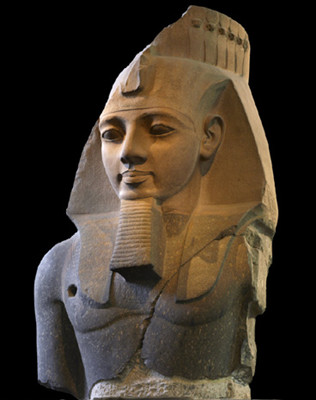"My name is Ozymandias, King of Kings:Look on my works, ye mighty, and despair!"
吾乃奥兹曼迪雅兹,万王之王,功业盖世,强者折服!
That was Shelley, writing in 1818 with a poetic vision inspired by the monumental figure here in the British Museum, whose serenely commanding face is looking down at me from a very great height.
1818年,大英博物馆的一尊雕像激发了诗人帕西比希雪莱的灵感,让他写下了这句最广为流传的诗句。
Shelley's Ozymandias is our Ramesses II, king of Egypt around 1270 BC, and his giant head dominates this space from a gallery plinth...although it would once have been even higher.
雪莱提到的奥兹曼迪雅兹骑术就是我们的拉美西斯二世,公元前1270年埃及的统治者。他表情平静庄严,巨大的头颅从高处俯视游客,气压全场。
"It's difficult for us to conceive now, with our air tools and electrical ways of cutting stone,
“即使凭借我们现有切割石头空气工具和电子方法的技术,也很难有这样的奇思妙想。
quite what an extraordinary achievement, not simply the scale and weight of a sculpture of this size is, but also the degree of finish."
这是相当非凡的成就,不仅仅是雕塑作品的规模和重量的,也体现出了它卓越的完成度。”
"There's no way of looking at this man and seeing him as a failure.
“这个男人的光辉令人无法直视,而且他从未尝过败绩。
He absolutely deserves the epithet 'the Great', he really was."
他绝对值得配得上“伟人”的封号,他是实至名归。”
A history of the world.
世界历史,
In a hundred objects.
百件藏品,
The Statue of Ramesses II,aproximatelly 1250 BC made of Granite;from Thebes,in Egypt.
公元前1250年发现于埃及古城底比斯的法老拉美西斯二世花岗岩雕像。













